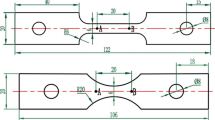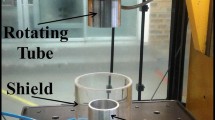Abstract
The flow drill screw (FDS) process has been widely used for joining plates and profiles in automotive body structures owing to its advantage of one-sided accessibility. A challenge in practical applications is how to quickly and accurately obtain the mechanical behavior of steel-aluminum FDS joints with different plate thicknesses and loading conditions. This study proposes a method that integrates experimental tests, numerical simulations, and artificial neural network (ANN) models to predict the mechanical behavior of joints. An experimentally validated joint numerical model was first used to generate the training and testing datasets of the ANN model. Based on the obtained datasets, two types of ANN models were set up. The classification model was employed to classify the failure modes of the joints, and the regression model was used to predict the peak force, failure displacement, and force–displacement curves. In the regression model, three data processing approaches were employed to improve the prediction accuracy of the curves. The best performance metrics of the model were achieved when the force–displacement curves in four failure modes were predicted independently. The feasibility of applying the well-trained ANN model to untrained datasets was successfully demonstrated. The failure modes of four untrained cases were correctly classified. The predicted force–displacement curves were in good agreement with the simulations. The average errors between the simulated and predicted peak force and failure displacement were 2.52% and 2.44%, respectively.
















Similar content being viewed by others
Data availability
Not applicable.
References
Liu W, Zhu X, Zhou Q, He H, Liu J, Xu C, Li L (2020) Modeling and simulation of the flow drill screw process of a DP590/Al6061-T6 multi-material joint used for vehicle body. Int J Adv Manuf Technol 110:1189–1201. https://doi.org/10.1007/s00170-020-05909-3
Aslan F, Langlois L, Balan T (2019) Experimental analysis of the flow drill screw driving process. Int J Adv Manuf Technol 104:2377–2388. https://doi.org/10.1007/s00170-019-04097-z
Li L, Jiang H, Zhang R, Luo W, Wu X (2022) Mechanical properties and failure behavior of flow-drilling screw-bonding joining of dissimilar aluminium alloys under dynamic tensile and fatigue loading. Eng Fail Anal 139:106479. https://doi.org/10.1016/j.engfailanal.2022.106479
Sønstabø JK, Holmstrøm PH, Morin D, Langseth M (2018) Static and dynamic testing and modelling of aluminium joints with flow-drill screw connections. Int J Impact Eng 115:58–75. https://doi.org/10.1016/j.ijimpeng.2018.01.008
Ma Y, Lou Y, Li Y, Lin Z (2018) Effect of rivet and die on self-piercing rivetability of AA6061-T6 and mild steel CR4 of different gauges. J Mater Process Technol 251:282–294. https://doi.org/10.1016/j.jmatprotec.2017.08.020
Huang C, Chen W, Sung S, Pan J (2018) Mechanical strength and failure mode of flow drill screw joints in coach-peel specimens of aluminium 6082–T6 sheets of different thicknesses and processing conditions. SAE Technical Paper 01:0116. https://doi.org/10.4271/2018-01-0116
Pan J, Chen W, Sung S, Su X, Friedman P (2018) Failure mode and fatigue behavior of flow drill screw joints in lap-Shear specimens of aluminium 6082–T6 sheets made with different processing conditions. SAE Int J Mater Manuf 11:327–340. https://doi.org/10.4271/2018-01-1237
Sønstabø JK, Holmstrøm PH, Morin D, Langseth M (2015) Macroscopic strength and failure properties of flow-drill screw connections. J Mater Process Technol 222:1–12. https://doi.org/10.1016/j.jmatprotec.2015.02.031
Grujicic M, Snipes J, Ramaswami S (2016) Process and product-performance modelling for mechanical fastening by flow drilling screws. Int J Struct Integr 7:370–396. https://doi.org/10.1108/IJSI-03-2015-0011
Sønstabø JK, Morin D, Langseth M (2016) Macroscopic modelling of flow-drill screw connections in thin-walled aluminium structures. Thin-Walled Struct 105:185–206. https://doi.org/10.4028/www.scientific.net/KEM.710.143
Sønstabø JK, Morin D, Langseth M (2018) Testing and modelling of flow-drill screw connections under quasi-static loadings. J Mater Process Technol 255:724–738. https://doi.org/10.1016/j.jmatprotec.2018.01.007
Costas M, Morin D, Sønstabø JK, Langseth M (2021) On the effect of pilot holes on the mechanical behavior of flow-drill screw joints: experimental tests and mesoscale numerical simulations. J Mater Process Technol 294:117–133. https://doi.org/10.1016/j.jmatprotec.2021.117133
Karathanasopoulos N, Pandya K, Mohr D (2021) Self-piercing riveting process: prediction of joint characteristics through finite element and neural network modelling. J Adv J Processes 3:100040. https://doi.org/10.1016/j.jajp.2020.100040
Bai S, Fang G, Zhou J (2020) Construction of three-dimensional extrusion limit diagram for magnesium alloy using artificial neural network and its validation. J Mater Process Technol 275:116361. https://doi.org/10.1016/j.jmatprotec.2019.116361
Jiang Z, Ehmann K, Cao J (2021) Prediction of forming temperature in electrically-assisted double-sided incremental forming using a neural network. J Mater Process Technol 302:117486. https://doi.org/10.1016/j.jmatprotec.2021.117486
Shang H, Wu F, Lou Y, Wang J, Chen Q (2022) Machine learning-based modelling of the coupling effect of strain rate and temperature on strain hardening for 5182-O aluminium alloy. J Mater Process Technol 302:117501. https://doi.org/10.1016/j.jmatprotec.2022.117501
Kim J, Lee H, Choi H, Lee B, Kim D (2020) Prediction of load-displacement curves of flow drill screw and RIVTAC joints between dissimilar materials using artificial neural networks. J Manuf Process 57:400–408. https://doi.org/10.1016/j.jmapro.2020.06.039
Zhou Q, Yao Z, Xu C, Zhou Y, Liu W, Li L (2023) Shared mechanism between flow drill screw and friction stir welding and its impact on failure prediction of steel-aluminium joints. J Mater Process Technol 311:117796. https://doi.org/10.1016/j.jmatprotec.2022.117796
Chen J, Shih Y (1999) A study of the helical effect on the thread connection by three dimensional finite element analysis. Nucl Eng Des 191(2):109–116. https://doi.org/10.1016/S0029-5493(99)00134-X
Gorji M, Pannemaecker A, Spevack S (2022) Machine learning predicts fretting and fatigue key mechanical properties. Int J Mech Sci 215:106949. https://doi.org/10.1016/j.ijmecsci.2021.106949
Sun X, Liu Z, Wang X, Chen X (2022) Determination of ductile fracture properties of 16MND5 steels under varying constraint levels using machine learning methods. Int J Mech Sci 224:107331. https://doi.org/10.1016/j.ijmecsci.2022.107331
Seo Y, Pandey S, Lee H, Choi C, Park Y, Ha M (2021) Prediction of heat transfer distribution induced by the variation in vertical location of circular cylinder on rayleigh-bénard convection using artificial neural network. Int J Mech Sci 209:106701. https://doi.org/10.1016/j.ijmecsci.2021.106701
Liu S, Xia Y, Liu Y, Shi Z, Yu H, Li Z (2022) Tool path planning of consecutive free-form sheet metal stamping with deep learning. J Mater Process Technol 303:117530. https://doi.org/10.1016/j.jmatprotec.2022.117530
Müller A, Karathanasopoulos N, Roth C, Mohr R (2021) Machine learning classifiers for surface crack detection in fracture experiments. Int J Mech Sci 209:106698. https://doi.org/10.1016/j.ijmecsci.2021.106698
Giacinto D, Musone V, Ruocco E (2022) Voids identification by isogeometric boundary element and neural network algorithms. Int J Mech Sci 231:107538. https://doi.org/10.1016/j.ijmecsci.2022.107538
Tsai C, Lee Y (2011) The parameters effect on performance in ann for hand gesture recognition system. Expert Syst Appl 38:7980–7983. https://doi.org/10.1016/j.eswa.2010.12.086
Kingma D, Adam J (2014) A method for stochastic optimization. arXiv Learning
Keras Development Team (2016) Keras: deep learning library for Theano and Tensorflow. https://keras.io/
Fang Z, Roy K, Chen B, Sham C, Hajirasouliha I, Lim J (2021) Deep learning-based procedure for structural design of cold-formed steel channel sections with edge-stiffened and un-stiffened holes under axial compression. Thin-Walled Struct 166:108076. https://doi.org/10.1016/j.tws.2021.108076
Sola J, Sevilla J (1997) Importance of input data normalization for the application of neural networks to complex industrial problems. IEEE Trans Nucl Sci 44(3):1464–1468. https://doi.org/10.1109/23.589532
Li Y, Lee T, Banu M, Hu S (2020) An integrated process-performance model of ultrasonic composite welding based on finite element and artificial neural network. J Manuf Process 56:1374–1380. https://doi.org/10.1016/j.jmapro.2020.04.033
Funding
This work was funded by the National Natural Science Foundation of China [grant number, 52272362], the Technical Innovation and Application Development Special Project of Chongqing [CSTB2022TIAD-KPX0035], and the Science and Technology Innovation Leading Program of Hunan Province [grant number, 2021GK4044].
Author information
Authors and Affiliations
Contributions
Qiaoying Zhou: investigation; methodology; writing—original draft preparation. Chengtai Hu and Junfeng Xing: experiment preparation. Congchang Xu: funding acquisition. Zhigang Xue and Chao Ma: testing and data collecting. Luoxing Li: methodology; revision; writing—reviewing and editing.
Corresponding author
Ethics declarations
Ethics approval
There was no ethical issue in this work.
Consent to participate
There were no participants in this work.
Consent for publication
The authors have consent to publish.
Competing interests
The authors declare no competing interests.
Additional information
Publisher's Note
Springer Nature remains neutral with regard to jurisdictional claims in published maps and institutional affiliations.
Rights and permissions
Springer Nature or its licensor (e.g. a society or other partner) holds exclusive rights to this article under a publishing agreement with the author(s) or other rightsholder(s); author self-archiving of the accepted manuscript version of this article is solely governed by the terms of such publishing agreement and applicable law.
About this article
Cite this article
Zhou, Q., Yang, Z., Hu, C. et al. Prediction of the mechanical behavior of steel-aluminum flow drill screw joints using artificial neural network. Int J Adv Manuf Technol 129, 4553–4567 (2023). https://doi.org/10.1007/s00170-023-12563-y
Received:
Accepted:
Published:
Issue Date:
DOI: https://doi.org/10.1007/s00170-023-12563-y




